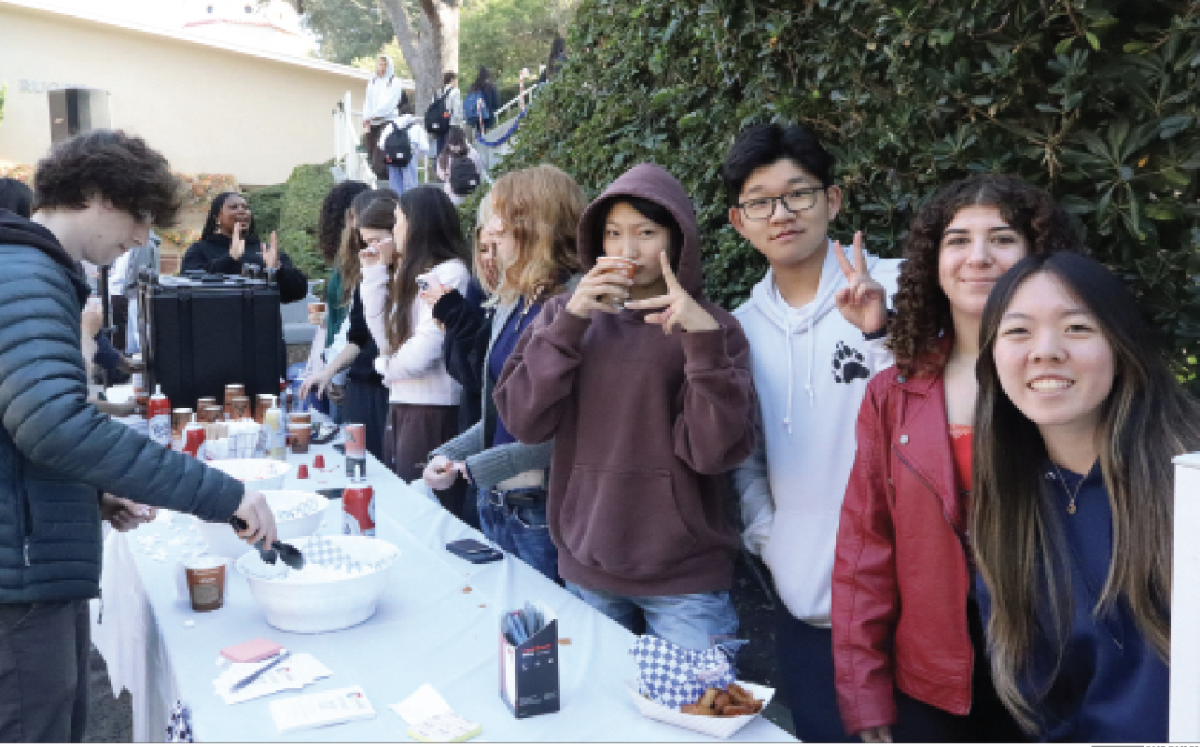Every time field hockey player Caitlin Neapole ’16 removes her shoes after practice, tiny pieces of ground-up tires fall out. Field hockey player Alexandra Grande ’16 is also intimately familiar with the crumb rubber pellets that form the base of the school’s artificial field turf.
“I’ve gotten those in my hair and clothes and even once in my eye,” Grande said. “It was really painful.”
An investigative report by NBC News in October on cancer clusters in young soccer players prompted questions from parents and a review by the school of the safety of the artificial turf on upper school and middle school playing fields and the threat that these crumb rubber pellets may pose.
The Advisory Board of Harvard-Westlake’s Institute for Scholastic Sports Science and Medicine discussed the potential cancer-causing effects of artificial turf in a closed-door meeting Oct. 22, and the board is in the process of consulting local doctors to gauge whether the turf could harm students’ health.
Artificial turf consists of synthetic fibers coating a layer of crumb rubber pellets from used tires, which cushions the turf and gives it the feel of dirt. Some fear that toxic materials in these rubber pellets could cause cancer.
In a statement distributed to parents and students who expressed concern, the school said that “currently there is no medical evidence to demonstrate a link between artificial turf and lymphoma.” However, an analysis of safety studies on artificial turf conducted by NBC was inconclusive. Crumb rubber contains ingredients such as butadiene and styrene, both listed as toxic substances by the Centers for Disease Control and Prevention’s Agency for Toxic Substances and Disease Registry. Used tires also contain carbon black, labeled a potential human carcinogen by the CDC and the California Environmental Protection Agency.
In its statement, the school recommended that athletes “wash their hands after playing outside, especially before eating.”
In 2003, the grass of the upper school campus’s natural grass football field was replaced with artificial turf made by turf company FieldTurf for $1.5 million. The turf started to shed strips of plastic eight years later and was replaced in 2011.
Members of the Institute for Scholastic Sports Science and Medicine said there is a dearth of evidence linking the turf to cancer and that parents should not worry.
“We’ve consulted doctors to find out what they think, and we’ve decided to stay ahead of the research,” Institute member and orthopedic surgeon David Skaggs (Jamie ’15, Clay ’21) said. “At this point, I think it’s mainly media-driven.”
Daniel Hinerfeld, deputy director of communications for environmental group National Resources Defense Council, believes that the crumb rubber pellets pose a serious threat.
“Crumb rubber is essentially a form of toxic waste,” Hinerfeld said. “The automobile and truck tires are made up of a whole host of toxic materials.”
Hinerfeld said that turf companies use crumb rubber because they can obtain large numbers of recycled tires cheaply.
“California is faced with the significant challenge of diverting or safely managing more than 40 million reusable and waste tires generated each year,” according to the California Department of Resources, Recycling, and Recovery.
Schools around the country and even the New York City parks department have removed turf fields to avoid any potential threat of cancer, and Hinerfeld believes that, while there is no proof that crumb rubber causes cancer, using artificial turf is not a risk worth taking for schools and parks.
“There is no proof that [crumb rubber] is healthy,” Hinerfeld said. “However, there are plenty of good reasons to suspect that it isn’t because of what’s in it. To a large extent, this is a debate over the burden of proof. Suppose it’s true that there are actually cancer clusters associated with long-term play on crumb rubber, as we’re already seeing anecdotes about.”
One Seattle nurse featured in the NBC story, for instance, saw four young soccer goalies with cancer in one week.
Philip Landrigan, Dean for Global Health and Professor of Pediatrics at the Mount Sinai School of Medicine, believes that artificial turf is entirely unnecessary.
“A much better solution is to build fields that are properly elevated, properly drained and that are planted with tough species of grass that don’t require pesticides, and that’s doable,” Landrigan told California television station KCET. “The crumb rubber fields are something that’s completely unnecessary, very expensive and can be avoided.”
The Institute for Scholastic Sports Science and Medicine has spoken already to doctors at UCLA Medical School and Children’s Hospital LA to help them study the issue.
“Our school is fortunate to have a group that can make a recommendation to school leadership,” Head of Upper School Audrius Barzdukas said. “I think what’s important is listening to people who are investigating such matters.”
The school said in its statement that it would “continue to monitor developments,” and Barzdukas added that if the Institute concluded that the turf was dangerous to students, the school would take action at once.
“If we knew of any dangerous substance anywhere where a student would come in contact with it that exposed that student to unacceptable levels of risk, we would immediately do something about it,” Barzdukas said.
“That’s really frightening,” said Suzanne Quilici, mother of soccer player Henry Quilici ’15. “That’s really concerning. I was always pro-grass.”




























